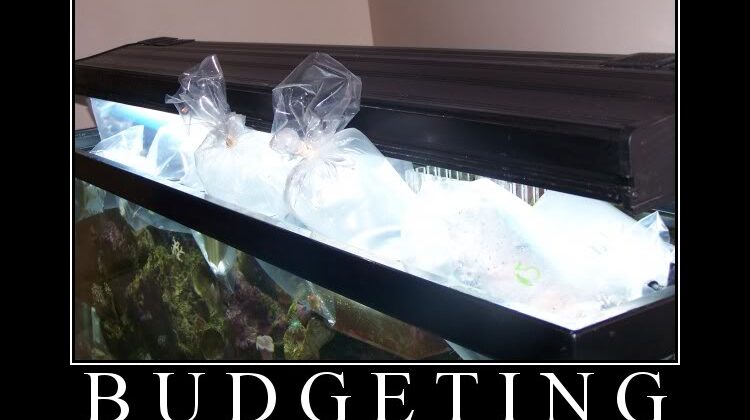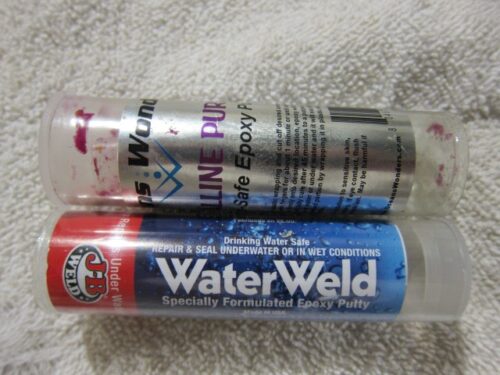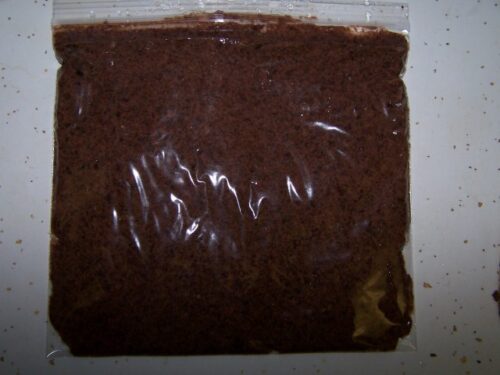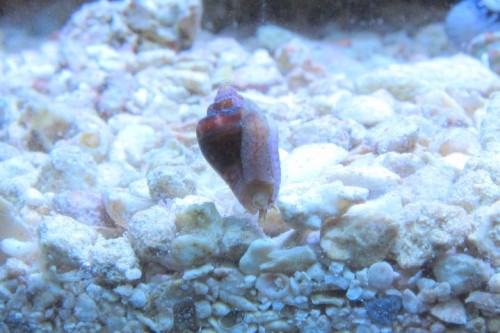
This is a guest post by Nikki of Reef’d Up Aquatics.
Of course, buying used equipment or making a DIY light fixture can save a ton of money quickly, but there are tons of small changes that can save a lot of money in the long run. My previous article, Budget Reefkeeping, Part 1, discussed a few of the quick ways to save money and this article will discuss some of the smaller tricks of the trade.
Glues & Epoxies
Instead of using the fancy coral glue, use Super Glue Gel. They’re both cyanoacrylate and have the same consistency. Look in the dollar stores. They usually carry Super Glue Gel in packs of three for $1. Personally, I like using these small tubes rather than one big bottle since the bottles frequently dry out. The special “reef” epoxy, such as Ocean’s Wonders “Coralline Purple” epoxy costs the same online as the local hardware store JB WaterWeld epoxy; however, the hardware store epoxy may help save on shipping.
Food
Fish/coral food can get pricey. I purchase seaweed in bulk and raw mixed seafood from the local Asian grocery. I combine them with any fish food I’ve won at reef club raffles, a bit of garlic, and some RO/DI water in my food processor (my recipe). I blend the food together (making sure to leave bigger pieces for larger fish), scoop the mixture into freezer bags, and then freeze the food. Freezing the food flat in bags makes it easy to break apart for use. I usually make more than I can use, so I trade it with other reef keepers for other items I need (equipment, corals, etc.). Each bag of high quality fish food costs less than $5, compared to $20 for an equivalent product. You could also place egg crate on top of waxed paper and pour the mixture into each square. After freezing, the blocks of food pop out easily (usually), and can be fed like normal squares of fish food. However, I like the freezer bags better as I can control how much I’m feeding more easily.
Frag Plugs and Discs
Frag plugs and discs range in price from $0.25 to about a dollar each. With portland cement, a bit of sand, and some water, you could make thousands of plugs for less than $15. The downside is that they take much longer to cure (about 6 weeks). I use bottle caps, soda cans, and various other household items for the moulds in my instructions.
Dosing
Walk into any local fish store, and the long aisles of aquarium chemicals are daunting. There’s molybdenum, iron, potassium, iodine, strontium, manganese, etc. Can you describe what each one does exactly for the tank? Can you test for it? If not, and you’re on a budget, then you probably don’t need it, regardless of what the store employees say. Focus on the main three: alkalinity, calcium, and magnesium. I make my own solutions based on the recipes by Randy Holmes-Farley, PhD. This involves using baking soda (yup, the big box from Sam’s Club), Epsom salts (also the big bag from Sam’s), magnesium chloride (ordered in bulk), and calcium chloride (also ordered in bulk.) Several years ago, Dow Flake (driveway melt calcium chloride) was frequently used, but the manufacturer changed its supply to one with a higher bromide content (can cause gill/skin irritation). Although macroalgae can uptake bromide, it is probably not effective enough in removing it from the aquarium. I prefer to buy a high quality source in bulk instead of taking the risk to save a bit of money there.
Medications
Alongside the “essential elements,” the number of herbal remedies available is astounding. Everyone wants a safe, in-tank treatment for everything. Unfortunately, what kills the undesirable usually kills the desirable. I won’t bash the herbal remedies, but I will say this, “if it sounds too good to be true, it probably is.”
Cleanup Crew
This is one of the easiest areas to save money in. Purchase a cleanup crew that will reproduce instead of a crew that you will have to replace every few months. Stomatella snails, collonista snails, asterina starfish, mini brittle starfish, and various pods are all common hitchhikers and will reproduce naturally in captivity (this means free!) Collumbellid snails (frequently called Hawaiian Strombus snails) also reproduce in captivity. I started with ten collumbellids two years ago, and now I have hundreds. Cerith snails will also reproduce in captivity. Avoid wild-collected sea hares as they only live approximately one year, and you may unknowingly purchase it at 11 months of age.
Calibration Fluids
You can make your own calibration fluids for pH probes (although I would use the commercially prepared solutions for nicer probes) and refractometers. Although many aquarists calibrate their refractometers with RO/DI water (to obtain the 0 ppt reading), a second solution should be used. Randy Holmes-Farley published a recipe using typical table salt. Calibration fluid for pH probes is also simple using a borax (laundry booster) and water recipe. This solution costs less than a penny!
Last thoughts
Buy in bulk. I can’t stress this enough. I determine what I need for the year, and then I buy it all at once. If there’s a higher quantity discount, I try to find others to join in on the purchase. This also saves on shipping as most companies have a free shipping policy with certain price purchases. The two items I care most about buying in bulk are activated carbon and granular ferric oxide (GFO).













